Yearning to uncover the mystery of Mahlon's death in the Bible? Dive into cultural cues and biblical theories that may shed light on this enigma.
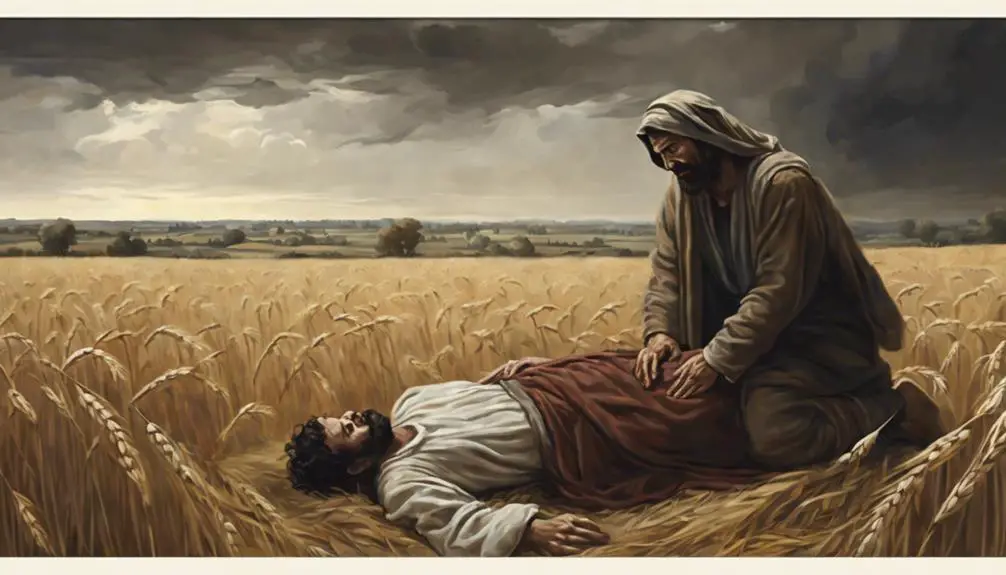
How Did Ruth's Husband Die in the Bible
Is it truly revealed how Ruth's husband, Mahlon, died in the Bible? While the biblical text only mentions that he died, without offering specifics, you might be curious about the possible causes.
Various theories have been proposed, from natural causes to military conflicts. Are there hidden clues within the scripture that might shed light on this mystery?
Let's embark on this journey of discovery together, as we explore this enigmatic event from a historical and cultural perspective.
Key Takeaways
- Ruth's husband, Mahlon, an Ephrathite from Bethlehem, likely died due to natural or unexplained causes, seen as divine punishment.
- His death left Ruth in a precarious socio-economic position as a widow in a patriarchal society.
- Ruth's mourning involved traditional customs of wearing sackcloth and isolation, highlighting her grief and loss.
- Post-loss, Ruth demonstrated resilience and faith, choosing to stay with her mother-in-law Naomi and eventually remarrying, thus altering her status and life.
Understanding the Historical Context
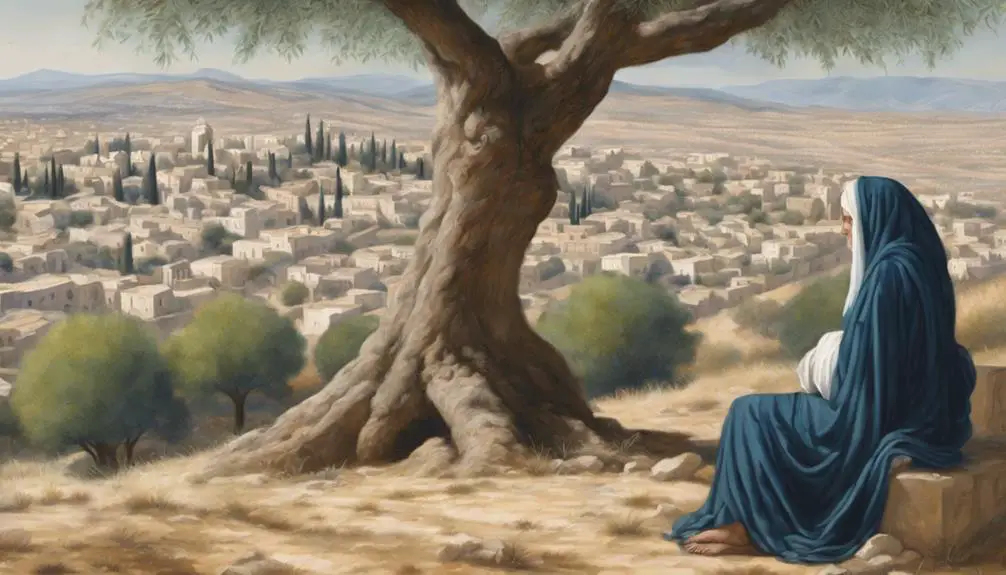
To fully grasp the death of Ruth's husband in the Bible, it's crucial to first understand the historical context in which these events occurred. You're expected to appreciate the cultural norms and religious perspectives that shaped the life and death narratives in the Bible.
Ruth's story unfolded during the time of the Judges, a volatile period in Israel's history marked by moral and religious decay. Cultural norms were heavily influenced by neighbouring nations, leading to a blend of religious practices. This blending often contradicted the monotheistic faith of the Israelites, causing tension and conflict.
Religious perspectives during this time were diverse, yet predominantly centred on obedience to God's law. Disobedience was believed to bring divine punishment, often in the form of death. Therefore, when Ruth's husband, an Israelite living in the foreign land of Moab, dies, it's interpreted through this religious lens.
Understanding these historical realities helps you comprehend the significance of Ruth's husband's death. It wasn't merely a personal tragedy but a reflection of the larger socio-religious dynamics of the time. So, to truly appreciate the narrative, consider the culture and religion that shaped the lives of Ruth and her husband.
Who Was Ruth's Husband?
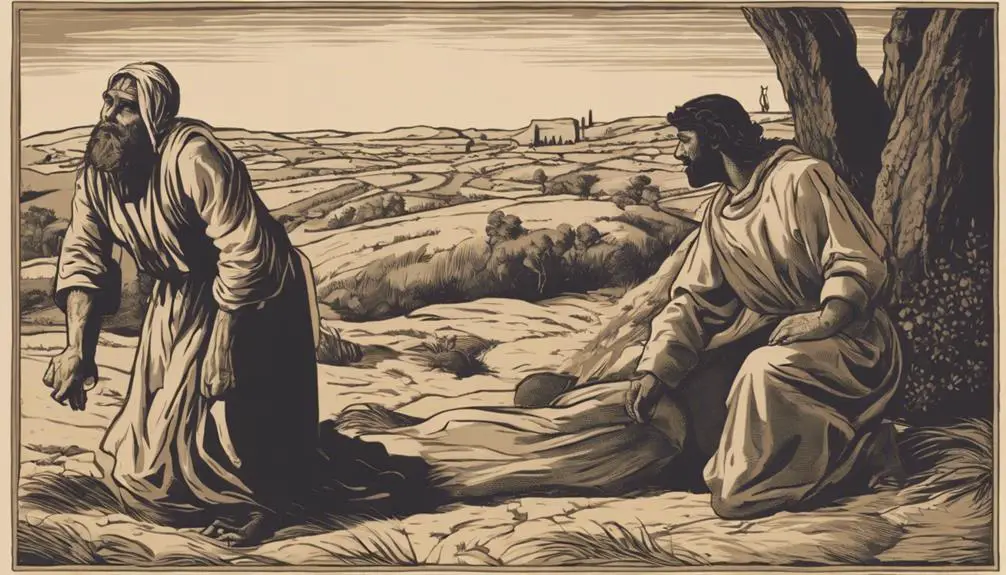
Diving deeper into the narrative, you'll find that Ruth's husband was a man named Mahlon, a figure of significant relevance in this biblical tale. Mahlon, an Ephrathite from Bethlehem, was part of a family that moved to Moab due to a severe famine.
Now, let's delve into the marital dynamics between Ruth and Mahlon. They were a couple navigating the cultural practices of their time, which were vastly different from today's norms. As Ruth's spouse, Mahlon played a pivotal role in shaping her destiny. He was her path to a new life outside her native Moab.
Mahlon's union with Ruth wasn't just a marriage. It represented a blending of cultures and traditions. This intercultural marriage was shaped by the prevalent cultural practices, allowing Ruth to become part of the Israelite community, thereby changing the course of her life.
Understanding who Mahlon was, and the role he played in Ruth's life, is crucial to grasp the profound narrative of this biblical story. His life and marriage to Ruth provide a glimpse into the cultural practices and marital dynamics of their era, giving us a richer understanding of the story's context.
The Death of Ruth's Husband
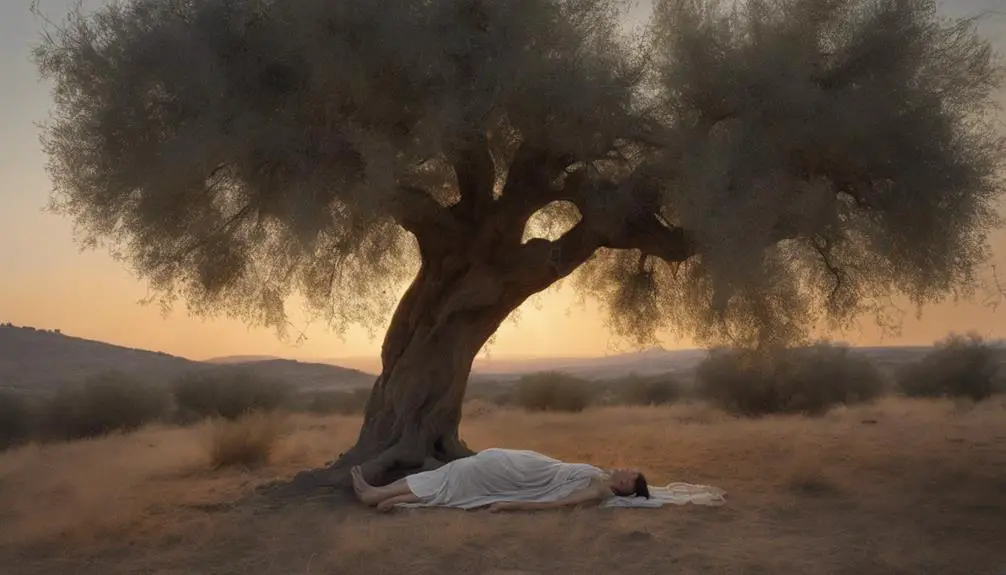
The tragic demise of Mahlon, Ruth's husband, plays a pivotal role in the unfolding biblical narrative. His death isn't just a personal loss for Ruth, but also creates a significant shift in her socio-economic status. You see, in the biblical times, the death of a husband left the widow in a precarious position. Without a male figure in the family, women like Ruth often faced a future filled with uncertainty and hardship.
The mourning customs of the time likely involved Ruth and her mother-in-law, Naomi, wearing sackcloth, an attire for those in deep distress or mourning. They probably spent a specific period in isolation, weeping for the loss of their beloved. It was a way of expressing their grief, a ritual that was both personal and communal.
The socio-economic impacts of Mahlon's death are profound. As a widow, Ruth's options were limited. She could remarry, stay with her in-laws, or return to her father's house. Each choice came with its own challenges and implications. In Ruth's case, her decision to stay with Naomi sets the course for the rest of her narrative. This decision, born out of tragedy, shapes her future in ways she couldn't have anticipated.
Implications of the Tragedy
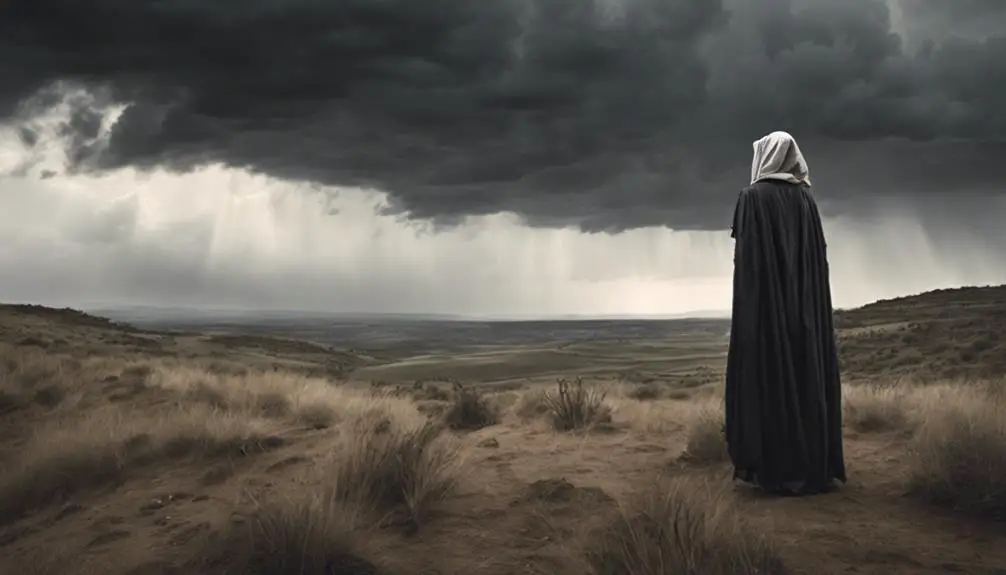
In the wake of this tragedy, you'll find that Ruth's life takes a drastic turn, not only on a personal level, but also in terms of her standing in society. Her grieving process is a complex journey that intertwines personal sorrow with cultural expectations. As a widow in ancient society, Ruth's status significantly changes, leading to profound implications.
The cultural impact of her husband's death is immense. Ruth's identity, once tied to her husband, is now one of a widow, a role often marginalized in her society. She's subjected to the harsh realities of a patriarchal culture, where a woman's value is predominantly linked to her marital status and ability to bear children.
Furthermore, the grieving process she experiences isn't only personal but also public. It's a shared experience, deeply rooted in her community's traditions and rituals. This communal aspect of grief could have either eased her sorrow by providing a supportive network or amplified it by constantly reminding her of her loss.
Ultimately, the tragedy of Ruth's husband's death reshapes her life in ways that are both deeply personal and broadly societal. The repercussions of this event are far-reaching, altering her emotional landscape and societal standing.
Ruth's Life Post-Loss
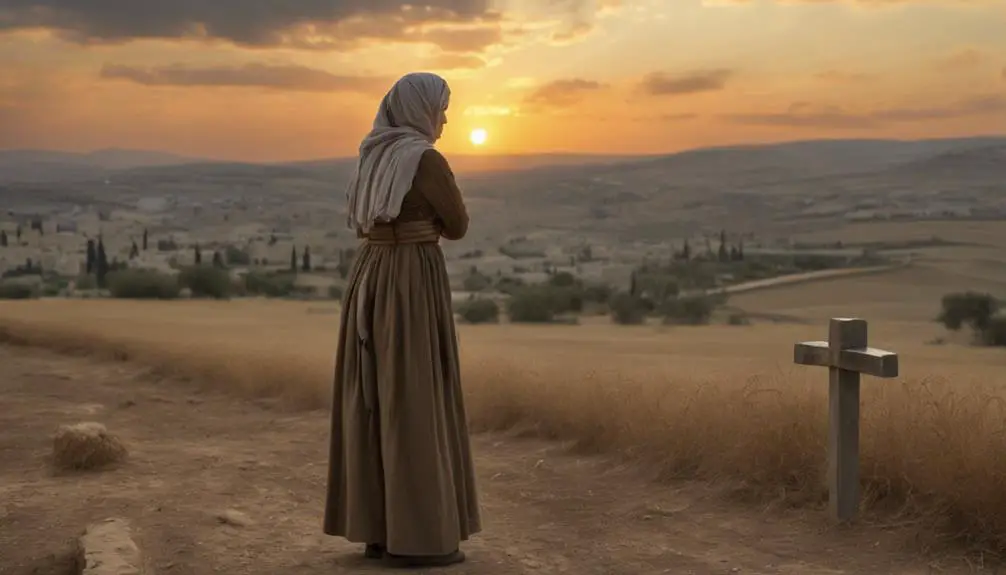
After the profound changes following her husband's death, Ruth's life unfolds into a testament of resilience and faith. You see her resilience journey take shape as she decides not to return to her Moabite roots but instead, clings to her mother-in-law, Naomi. It's a decision made from a place of deep loyalty and love, but it also highlights her courage to face an uncertain future in a foreign land.
Upon reaching Bethlehem, Ruth's cultural impact begins to surface. She works tirelessly, gleaning in fields to provide sustenance for her and Naomi. In doing so, she becomes a beacon of acceptance and integration, showing the Israelites that one's origins don't predetermine one's character or worth.
Ruth's story doesn't end in despair, though. She finds favor with Boaz, a wealthy relative of Naomi. Their marriage signifies Ruth's full acceptance into the Israelite community, reinforcing her cultural impact. It's an uplifting ending, demonstrating that through resilience, faith, and hard work, one can overcome adversity and create a new, fruitful life post-loss.
This narrative of resilience, faith, and cultural integration continues to inspire many, even today. The story of Ruth is a testament to the power of resilience in the face of loss.
Frequently Asked Questions
What Is the Significance of Ruth's Story in the Context of the Bible as a Whole?
Ruth's story in the Bible carries great significance. It's steeped in biblical symbolism and cultural implications.
You see, Ruth's unwavering loyalty to Naomi embodies the essence of faithfulness – a key tenet of Christian teaching. Her tale also breaks cultural norms, showcasing a foreign woman's acceptance into Jewish society.
This narrative reveals the Bible's overarching message of love, acceptance, and faith that transcends cultural boundaries.
How Did Ruth's Relationship With Her Husband Influence Her Decisions After His Death?
Ruth's marriage dynamics and cultural influences greatly shaped her decisions after her husband's death. She chose not to return to her own people, but to stick with Naomi, her mother-in-law. This shows her loyalty and commitment, traits likely nurtured in her marriage.
The cultural expectation was to leave, but Ruth defied this, indicating a deep bond not easily broken. Her husband's death didn't sever her relationships, but rather, strengthened them.
How Did Ruth's Faith Impact Her Response to Her Husband's Death?
Ruth's faith greatly influenced her response to her husband's death. She exhibited remarkable resilience, choosing to embrace her mourning practices rather than succumbing to despair.
Her faith motivated her to remain loyal to her mother-in-law, Naomi, and adopt her faith and people. You can see how her beliefs provided the strength needed to navigate this challenging period in her life.
Her story is a powerful testament to the transformative power of faith.
What Lessons Can Modern Readers Take From Ruth's Story?
You can learn from Ruth's resilience and cultural adaptation. Despite losing her husband, she remains strong and adapts to a new culture, showcasing her courage and determination.
You're reminded to stay resilient during hardships and embrace new experiences. Ruth's story teaches you that change, although challenging, can lead to unexpected blessings.
It's a lesson in faith, courage, and the importance of stepping outside your comfort zone.
Are There Any Controversies or Debates Among Scholars About the Interpretation of Ruth's Story?
Yes, there's ongoing debate about Ruth's story, particularly around gender dynamics and cultural interpretations. Some scholars focus on her agency and power in a patriarchal society. Others argue her actions reflect cultural norms, not personal choice.
Interpretations also vary widely across different cultures and contexts. It's a rich, complex narrative that continues to spark lively scholarly discussion.
Conclusion
So, you've delved into the biblical story of Ruth and the tragic demise of her husband.
You've discovered that Mahlon's death, while heartbreaking, was a turning point for Ruth. It led her on a path of loyalty and faith, ultimately changing her life and lineage.
This tale serves as a reminder that even in the face of tragedy, resilience and faith can pave the way for a hopeful future.



Sign up